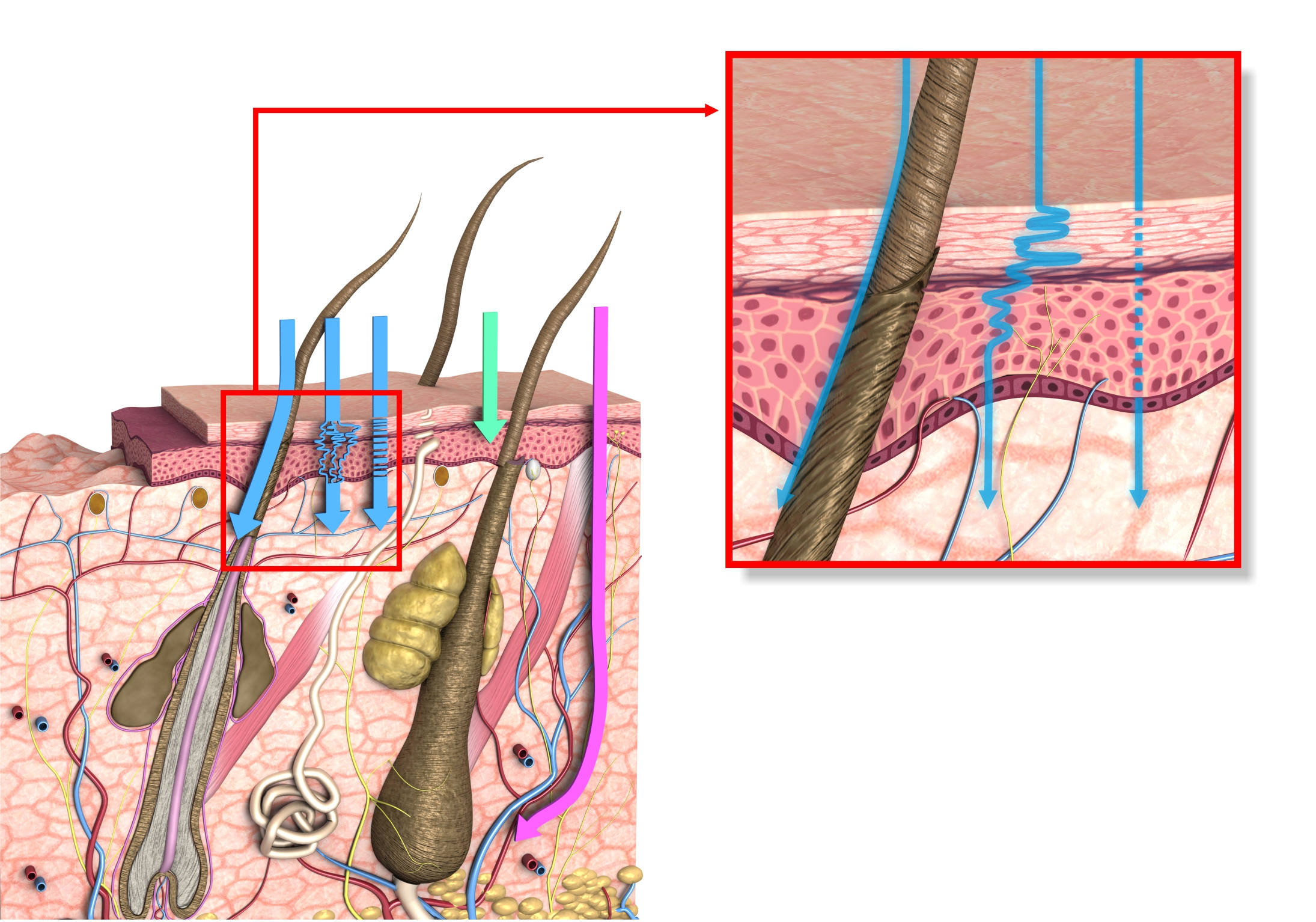Percutaneous/dermal absorption
Substances can penetrate into the skin along three different pathways.The Skin Care Forum illustrates the uptake of substances through the skin in a schematic diagram shown here.
The evaluation of the absorption of substances through the skin (also termed percutaneous, skin or dermal absorption) is an important aspect of the complex risk assessment process needed to evaluate the safety of substances applied to the skin. In addition, qualitative and quantitative information on skin absorption can be used to improve the effectiveness of topical pharmaceuticals or cosmetic ingredients and their formulations.
The definitions of dermal absorption can vary. Here, the definitions described by the European Scientific Committee for Consumer Safety (SCCS, SCCS/1358/10) and defined by the World Health Organization (WHO) in 2005 (SCCP/0970/06) are used.
The percutaneous/dermal absorption process is a global term which describes the passage of compounds through the skin. Substances can be absorbed by the skin along three different pathways: Appendegeal (shunt; follicular) pathway; intercellular (highest amounts), and intracellular (lowest amounts). The Skin Care Forum illustrates the uptake of substances through the skin in a schematic diagram shown here (image section; blue arrows). This process can be divided into three steps:
- Penetration (blue arrows) is the entry of a substance into a particular layer or structure such as the entrance of a compound into the stratum corneum.
- Permeation (green arrow) is the penetration through one layer into another, which is both functionally and structurally different from the first layer.
- Resorption (pink arrow) is the uptake of a substance into the vascular system (lymph and/or blood vessel), which acts as the central compartment.
References
- SCCS/1358/10: Basic criteria for the in vitro assessment of dermal absorption of cosmetic ingredients. 2010
http://ec.europa.eu/health/scientific_committees/consumer_safety/docs/sccs_s_002.pdf - World health organization Environmental Health Criteria 235; DERMAL ABSORPTION; 2006
http://www.who.int/ipcs/publications/ehc/ehc235.pdf - Ulrich Schäfer, University of Saarbrücken, Percutaneous absorption of the skin

